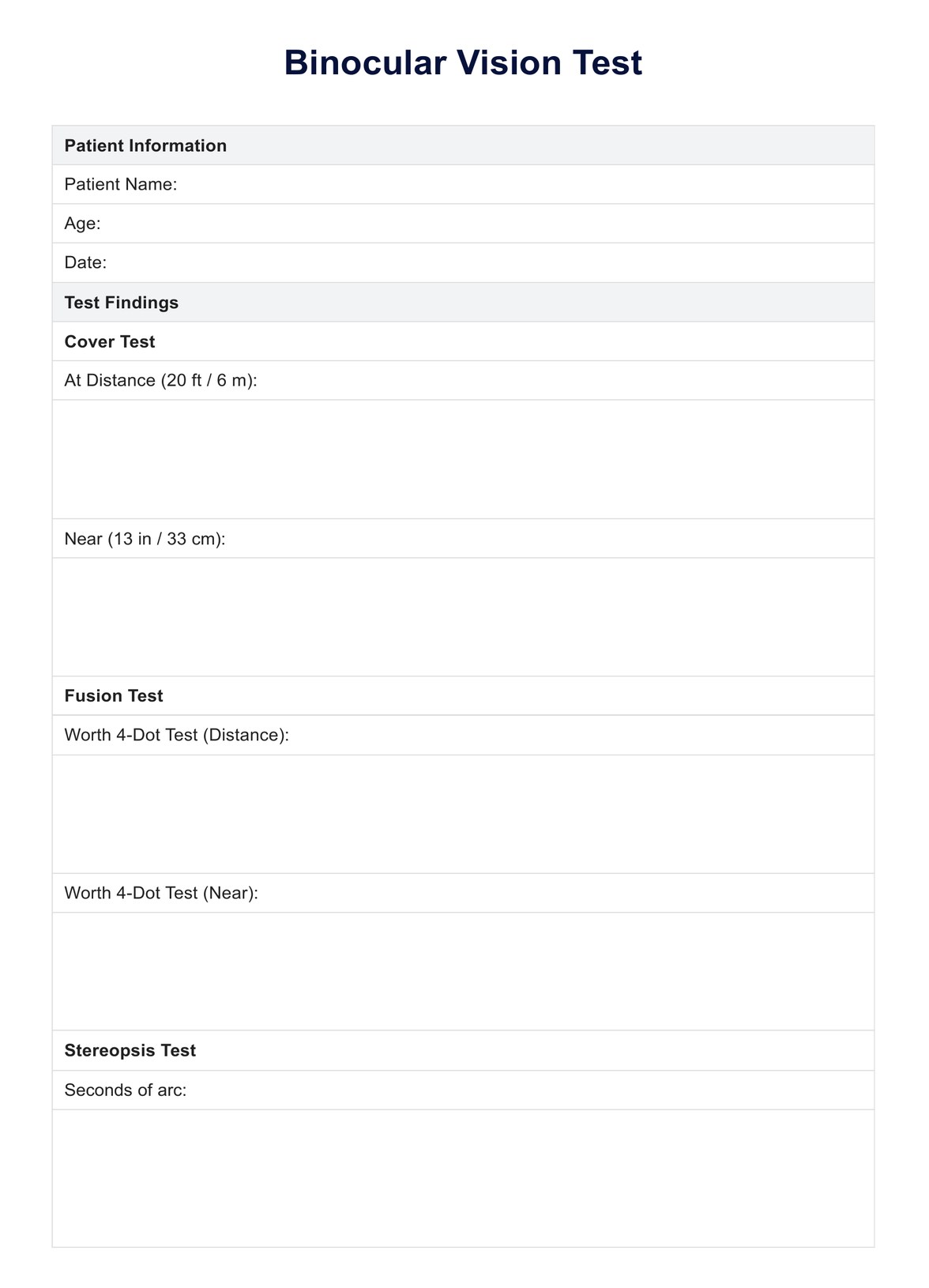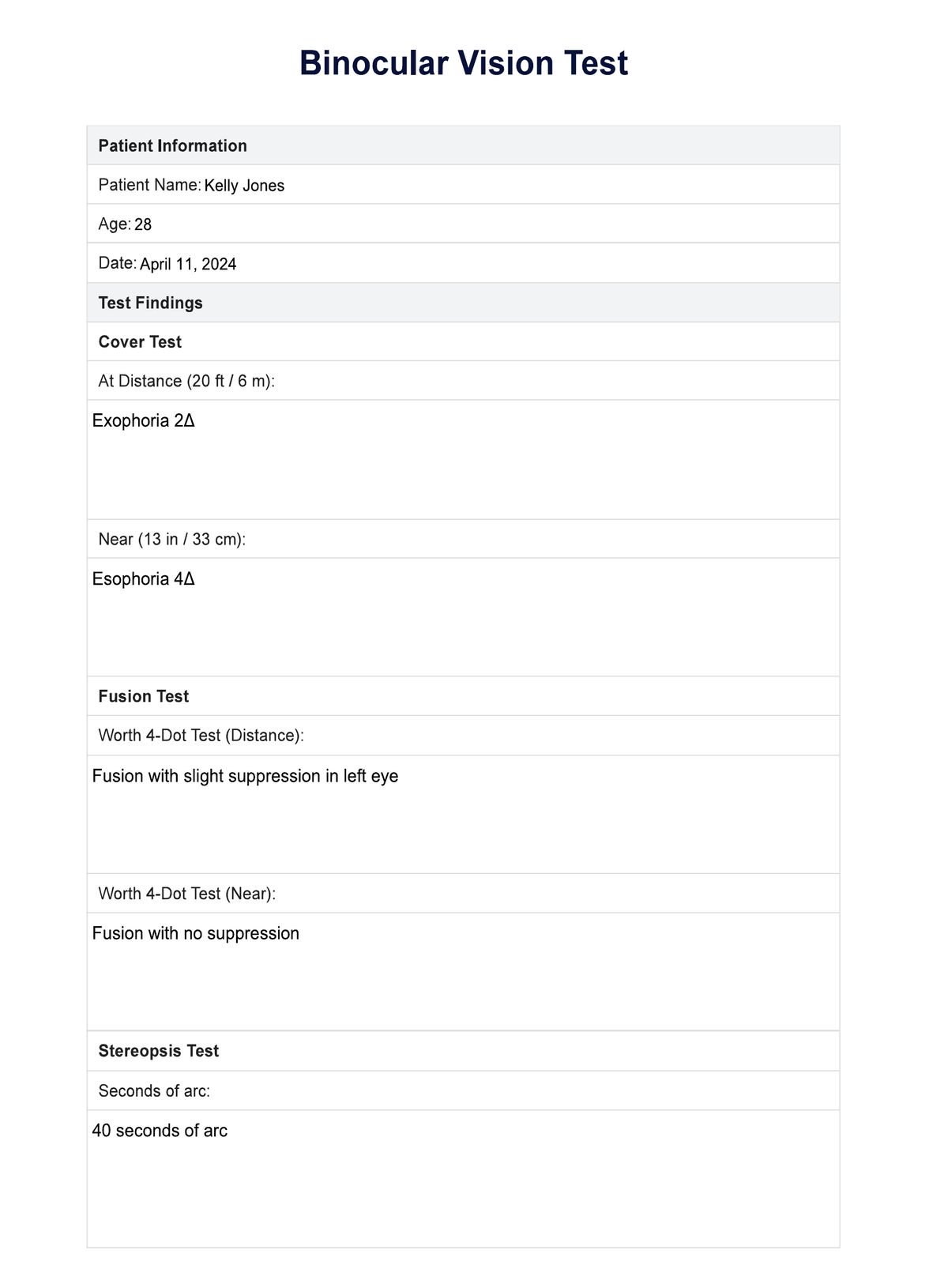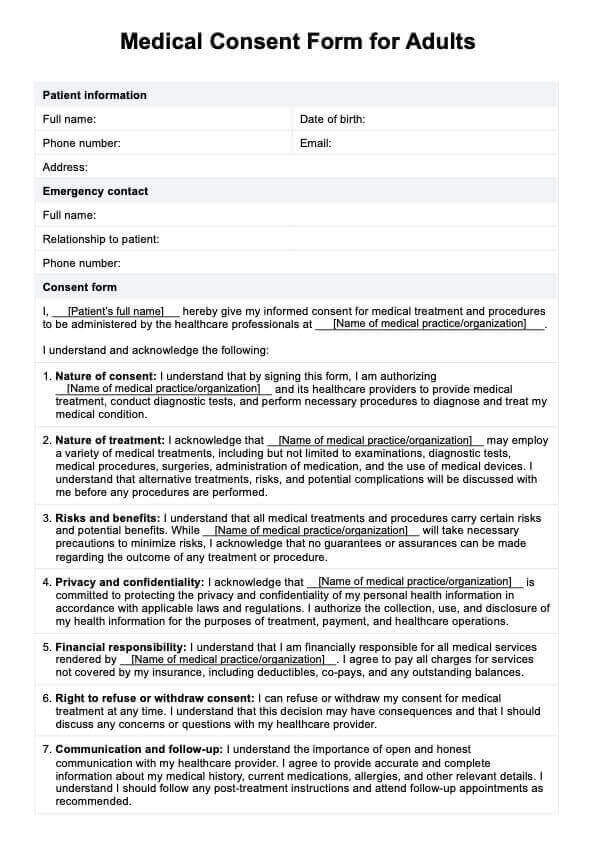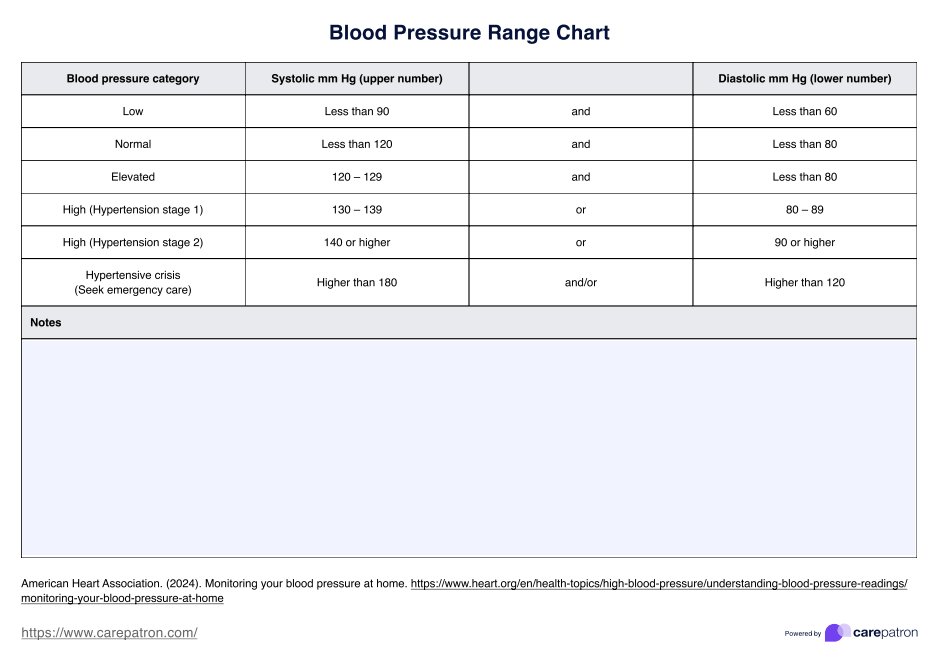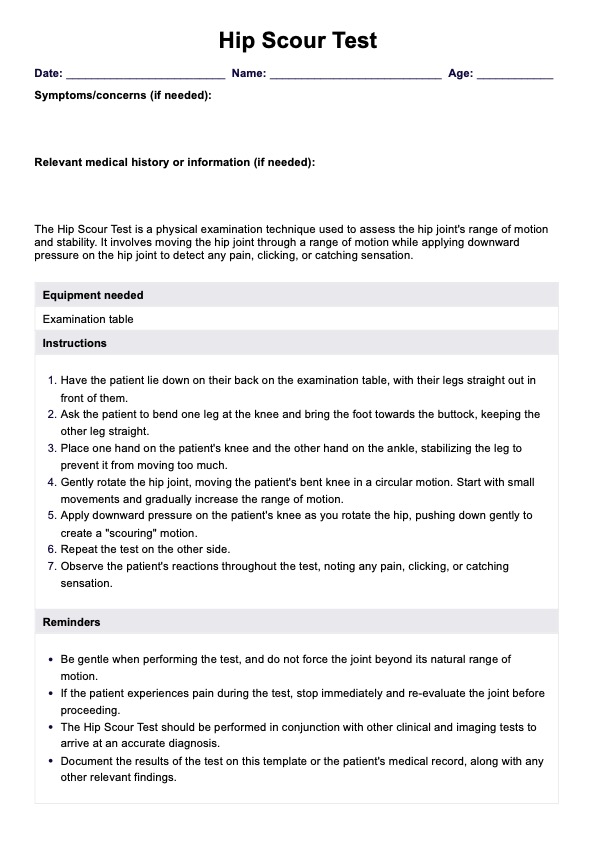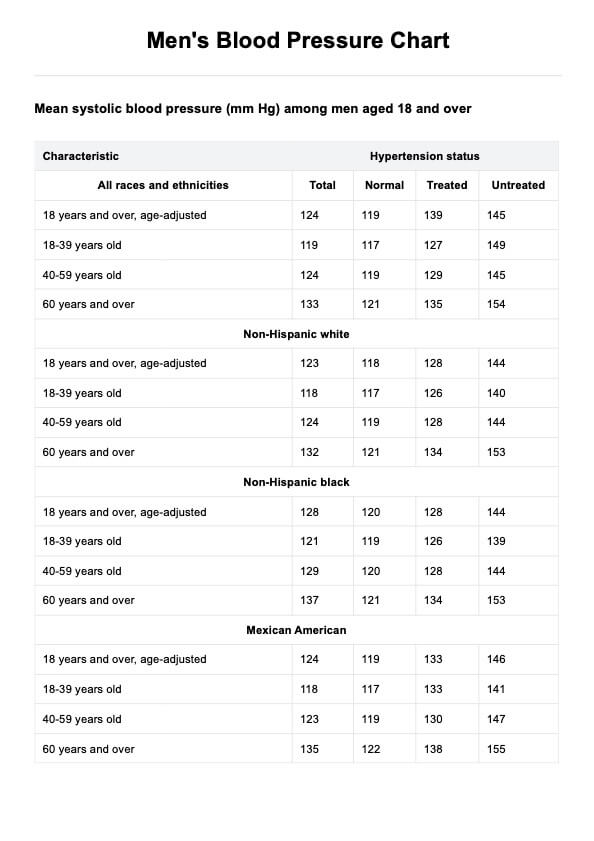Binocular Vision Test
Carepatron's free PDF download provides a binocular vision test example that you can use to assess your vision. Learn more about binocular vision and how to conduct the test effectively.


What is binocular vision?
Binocular vision refers to the ability of the eyes to work together seamlessly, allowing us to perceive depth and three-dimensional space. It is the harmonious collaboration between both eyes, creating a single, unified image in the brain. This coordination is essential for judging distances, catching moving objects, and maintaining balance.
The human visual system achieves binocular vision through a process called stereopsis. Each eye captures a slightly different view due to their different facial positions. These disparate images are then sent to the brain, fusing them into a coherent and three-dimensional perception of the environment.
One crucial aspect of binocular vision is the overlap of the visual fields of both eyes. This overlapping area, known as the binocular field, allows the brain to merge the images received from each eye, enhancing depth perception. Without proper binocular vision, the world would appear flat and lack dimension.
The significance of binocular vision extends beyond the aesthetic experience of seeing a three-dimensional world. It is pivotal in activities requiring hand-eye coordination, such as sports, driving, and reading and writing. Additionally, binocular vision contributes to a person's sense of balance and spatial orientation, influencing overall motor skills.
Binocular Vision Test Template
Binocular Vision Test Example
What is binocular vision dysfunction?
Binocular vision dysfunction (BVD) encompasses a range of conditions where the eyes struggle to work harmoniously, leading to visual issues beyond simple refractive errors. This category includes binocular vision disorders, visual perceptual deficits, and various binocular vision problems that can impact daily activities.
Binocular vision conditions may arise from muscle imbalances, neurological challenges, or developmental factors. When the eyes fail to coordinate effectively, it can result in symptoms like double vision, eye strain, headaches, and difficulty focusing. Prolonged visual processing speed, a key aspect of binocular vision, can adversely affect individuals with BVD.
Addressing binocular vision dysfunction is essential in its potential impact on daily functioning. Activities that require precise hand-eye coordination, like reading, writing, and sports, can become challenging and frustrating for individuals with untreated BVD. Moreover, these conditions may contribute to spatial awareness and coordination difficulties, affecting overall motor skills and balance.
Binocular vision dysfunction is not limited to visual discomfort; it can also influence academic performance in children and adults. Visual perceptual deficits associated with BVD may lead to challenges in processing and interpreting visual information, affecting tasks such as reading comprehension and attention to detail.
Recognizing the signs of binocular vision dysfunction is crucial for early intervention and management. A comprehensive binocular vision test can help identify specific issues and guide the development of targeted treatment plans, including vision therapy or corrective lenses.
Symptoms of binocular vision dysfunction
Binocular vision dysfunction (BVD) manifests through various symptoms, indicating challenges in the coordination and function of both eyes. Recognizing these symptoms is crucial for seeking timely intervention and improving overall visual comfort.
Below are some common symptoms associated with binocular vision dysfunction:
Double vision
Double vision occurs when the eyes fail to align correctly, causing overlapping images. This symptom can significantly impact activities requiring accurate depth perception, such as driving and reading.
Eye strain and fatigue
Individuals with binocular vision problems often experience strain and fatigue, particularly during activities that demand sustained visual focus. This includes reading, computer work, or prolonged visual tasks.
Headaches
Frequent headaches, especially after visual tasks, may indicate binocular vision conditions. The strain on the eyes and the effort required to maintain optical alignment can contribute to tension headaches.
Difficulty focusing
Binocular vision dysfunction can lead to difficulty focusing on objects, especially when transitioning between near and far distances. This can affect tasks like shifting attention from a book to a distant whiteboard in a classroom setting.
Poor hand-eye coordination
Impaired binocular vision can impact hand-eye coordination, such as catching a ball, or handwriting, or engaging in sports that demand precise spatial awareness.
Reduced performance in visual tasks
Individuals with binocular vision dysfunction may exhibit suboptimal performance in visual tasks, such as reading, writing, or tracking moving objects. This can be particularly noticeable in academic and professional settings.
Avoidance of reading or near work
People with binocular vision problems may avoid tasks requiring sustained close focus, such as reading. This avoidance is often an adaptive response to alleviate discomfort.
What is a Binocular Vision Test?
A binocular vision test is a comprehensive assessment designed to evaluate the coordination and functionality of both eyes working together. This examination goes beyond standard visual acuity tests, which primarily measure the clarity of vision in each eye individually.
Instead, a binocular vision assessment focuses on how well the eyes collaborate, providing valuable insights into an individual's visual skills and potential binocular vision dysfunction.
The importance of a binocular vision test lies in its ability to uncover subtle problems that may not be detected through standard vision screenings. While acuity tests measure the clarity of vision, a binocular vision assessment assesses how well the eyes work together to perform various visual functions.
This specialized test is precious for individuals experiencing symptoms of binocular vision dysfunction, such as double vision, strain, or difficulty focusing. Unlike a routine vision screening, a binocular vision test evaluates the coordination of eye movements, depth perception, and the ability to maintain focus during different visual tasks.
Additionally, a binocular vision dysfunction test typically involves a series of exercises and assessments tailored to uncover specific challenges in visual processing, and it involves specialized tools like the Binoptometer 4P and other instruments. Assessments may include evaluating convergence (the ability of the eyes to turn inward for close tasks), divergence (the ability to move the eyes outward for distant tasks), eye-tracking, fixation stability, and overall binocular coordination.
How are the results of a Binocular Vision Test interpreted?
Interpreting the results of a binocular vision test involves understanding various aspects of visual function and coordination. Here are typical results and their implications:
Convergence and divergence
If the eyes converge and diverge smoothly and accurately, it suggests healthy coordination. This is essential for comfortable near and far vision tasks.
However, if there is difficulty converging or diverging may indicate issues with eye coordination, it can lead to symptoms like double vision or eye strain.
Eye-tracking
Smooth and accurate eye tracking is crucial for following moving objects and reading. Normal results indicate efficient eye movement.
Jerky or inconsistent eye movements may suggest difficulty tracking objects, impacting activities requiring smooth visual pursuit.
Depth perception
Good depth perception enables accurate judgment of distances. Normal results indicate effective binocular vision, crucial for activities like driving.
Poor depth perception may result in difficulties navigating space and may be associated with issues like tripping or bumping into objects.
Fixation stability
Stable fixation is vital for focusing on a single point. Expected results indicate the ability to sustain attention without visual fatigue.
Unstable fixation may contribute to difficulties in tasks that require prolonged focus, leading to strain and headaches.
What are the benefits of taking a Binocular Vision Test?
Taking a binocular vision test offers a range of benefits that extend beyond routine eye examinations. Here are some key advantages:
Early detection of binocular vision issues
Regular binocular vision exams allows individuals to identify potential issues early on. Early detection allows for proactive management, preventing the progression of conditions that may lead to symptoms like double vision or strain.
Customized intervention plans
Eye doctors can create personalized intervention plans based on the binocular vision test results. These plans may include vision therapy exercises or recommendations for corrective lenses to address specific issues, such as accommodative dysfunction or ocular motility problems.
Improved visual comfort
Addressing binocular vision issues identified by eye doctors through testing can significantly improve visual comfort. This particularly benefits tasks requiring prolonged visual focus, reducing symptoms like strain and headaches.
Prevention of amblyopia (lazy eye)
Binocular vision exams can help detect conditions that may lead to amblyopia, commonly known as lazy eye. Early intervention is crucial for preventing or mitigating the impact of amblyopia on abilities.
Correction of blurry vision
Individuals experiencing blurry vision, especially in specific situations like reading or using digital devices, may find relief through targeted interventions recommended after a binocular vision test.
Enhanced ocular posture
Assessing ocular posture through binocular vision testing allows for identifying issues related to eye alignment. Correcting these issues can improve ocular posture, reducing strain on the eyes.
Optimization of visual abilities
The ultimate goal of a binocular vision exam is to optimize abilities. Whether reading, driving, or participating in sports, addressing binocular vision issues can lead to enhanced performance and a better overall visual experience.
How is binocular vision dysfunction treated or managed?
Binocular vision dysfunction (BVD) can be effectively treated and managed through various approaches tailored to address specific issues identified during binocular vision testing. Here are key ways in which binocular vision dysfunction is commonly treated or managed:
Vision therapy
Vision therapy can address problems related to eye coordination, tracking, and convergence, helping individuals develop more efficient and comfortable binocular vision.
Corrective lenses
Corrective lenses can enhance visual acuity and alleviate symptoms associated with binocular vision dysfunction, such as double vision or eye strain.
Pencil push-ups and brock string exercises
These exercises help enhance convergence abilities and strengthen the eye muscles, contributing to improved binocular vision.
Computer-based vision training programs
Computer-based vision training programs offer a structured and interactive way to address specific binocular vision issues, making them an effective complement to traditional vision therapy.
Prism glasses
Prism glasses are prescribed to individuals with specific binocular vision issues, such as difficulties in maintaining proper eye alignment.
Lifestyle and environmental modifications
These modifications can reduce eye strain and support overall visual well-being, particularly for individuals with binocular vision dysfunction.
Commonly asked questions
The test for binocular vision typically involves a comprehensive examination that requires specialized equipment, instruments, and screening kits. It is done by an eye care professional, assessing factors like eye alignment, convergence, divergence, and depth perception.
Symptoms of binocular vision issues include double vision, eye strain, headaches, and difficulty focusing. If you experience these symptoms, consult with an eye care professional for a thorough examination to determine if you have binocular vision dysfunction.
While a professional assessment is recommended, a simple at-home test involves covering one eye at a time and observing if objects appear in their correct positions. If you notice discrepancies, it may indicate potential binocular vision issues, and you should seek professional evaluation.


